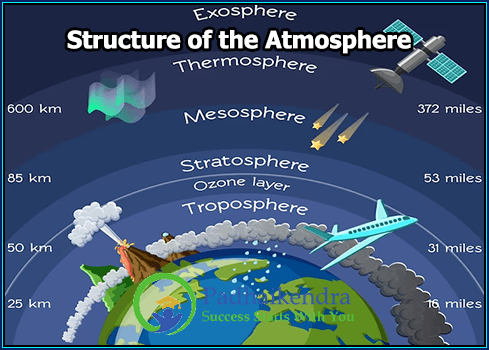The Earth’s atmosphere is divided into several distinct layers based on temperature and composition. These layers are defined by the changes in temperature and density that occur with increasing altitude.
The five primary layers of the atmosphere are:
- Troposphere: This is the lowest layer of the atmosphere, extending from the Earth’s surface up to an altitude of about 12 kilometers. It is the layer where most of the Earth’s weather occurs, and the temperature decreases with altitude.
- Stratosphere: This layer extends from the top of the troposphere up to an altitude of about 50 kilometers. The stratosphere contains the ozone layer, which absorbs harmful ultraviolet radiation from the sun. The temperature increases with altitude in this layer.
- Mesosphere: This layer extends from the top of the stratosphere up to an altitude of about 85 kilometers. The temperature decreases with altitude in this layer, and it is the layer where meteors burn up upon entering the Earth’s atmosphere.
- Thermosphere: This layer extends from the top of the mesosphere up to an altitude of about 600 kilometers. The temperature increases with altitude in this layer, and it is the layer where the International Space Station orbits.
- Exosphere: This is the outermost layer of the atmosphere, extending from the top of the thermosphere up to an altitude of about 10,000 kilometers. This layer merges with the vacuum of space, and the air molecules become so sparse that they can travel for great distances without colliding with each other.
Each layer of the atmosphere has a distinct set of characteristics and plays a vital role in regulating the Earth’s climate and weather patterns. The structure of the atmosphere also affects the transmission of radio and television signals, as well as satellite communications.





